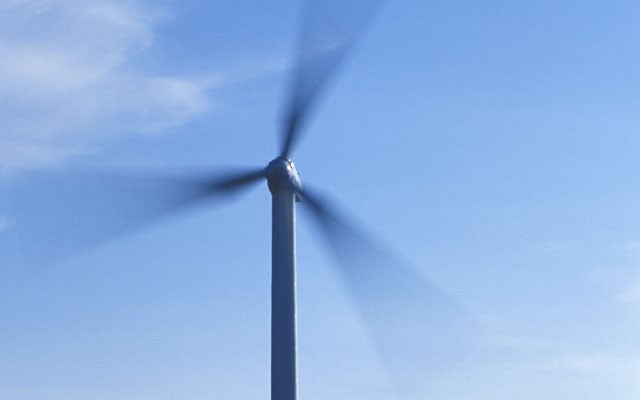Opponents have called it “another Solyndra waiting to happen.”
An estimated $2.6 billion offshore wind project near Massachusetts could be awarded a $350 million Department of Energy (DOE) loan guarantee and a 30 percent federal tax credit, according to recent reports.
The Daily Signal depends on the support of readers like you. Donate now
The much beleaguered 468 megawatt, 130 turbine Cape Wind project announced a debt agreement had been reached in late March with the Japanese banking firm Bank of Tokyo-Mitsubishi for between $1.8 billion and $2 billion in loans. The project expects to use investor equity, loans, and an investment tax credit to provide the rest of the cost.
The loan guarantee sought by Cape Wind is approximately $350 million, according to the Cape Cod Times. An earlier version of the loan guarantee for the same project had come in at just under $2 billion, The Wall Street Journal reported, but confirmed that a “considerably” smaller loan was under review this spring.
That original loan application for $1.97 billion started in the now closed 1705 loan program created by President Obama’s stimulus bill, which included loan guarantees to Abound Solar and Solyndra. The application has rolled over into the separate 1703 program administered by the DOE. The 1703 program has $34.8 billion in loan authority, but has yet to issue any loan guarantees, according to a recent Government Accountability Office report.
The DOE put the earlier, much larger loan guarantee request on hold in May 2011, noting that the application was “not terminated” but shelved in favor of other projects further along in development at the time, WSJ said.
In addition to the loan guarantee, Cape Wind will apply for a 30 percent federal investment tax credit. In order to receive the tax credit, construction must begin by the end of 2013. That would yield $780 million in tax credits, based on a final $2.6 billion cost.
Cape Wind must “commence construction” before December 31, “but the federal government has not yet clarified what exactly commencing construction means,” Alicia Barton, CEO of the Massachusetts Clean Energy Center, told The Standard–Times.
Departing Interior Secretary Ken Salazar awarded Cape Wind the first federal lease for an offshore wind project in 2010. He remains “optimistic” the project will finally begin this year, despite a decade-long delay plagued by lawsuits, strong local opposition, and an inability to find project financing.
A DOE report from February 2011 called for 54 gigawatt (GW) of offshore wind deployment by 2030, nearly 14 times the amount currently installed anywhere in the world. The DOE has spent or obligated some $308 million for offshore wind projects between 2006 and 2012.
A three-year, $500,000 offshore wind market research project commissioned by the DOE estimates that the cost of offshore projects will be “2.5 to 4 times the cost of land-based wind.”
NSTAR Electric, who recently inked a 15-year power purchase agreement with Cape Wind for 27.5 percent of the project’s output, estimated that price per megawatt (MW)—at $5.6 million—was much higher than even other offshore wind projects in Europe and China with costs ranging from $1.3 million to $4.8 million per MW.
The energy itself, priced at $0.187 per kilowatt hour (contingent on receipt of federal subsidies and the DOE loan guarantee, with a 3.5 percent annual increase), would produce “above-market costs” ranging from $438 million to $513 million, according to the Massachusetts Department of Public Utilities. Without renewed federal tax credits, the estimated price would have jumped another 13.5 percent.
The projected capacity factor for Cape Wind stands at just 37.1 percent. This represents the ratio of actual output for the power source against its potential output if the plant was able to operate at full nameplate capacity. Cape Wind is slated to provide 468 MW of nameplate capacity.
The Heritage Foundation’s Nick Loris called the loan guarantee programs a failure whether the recipients proved profitable or not, and illustrated their effects on American families:
Right now, families are forced into buying pricier electricity and taxpayers are on the hook if the project fails. And because many of these projects are in early stages of development, labeling them successes is premature—and if they do go bankrupt, the taxpayer funds are merely providing a lifeline.
































